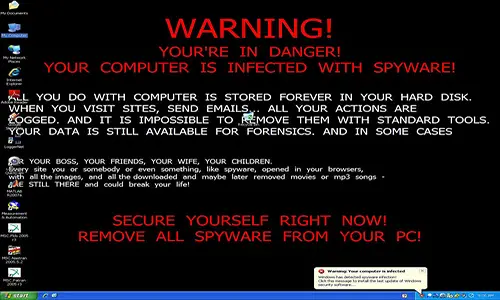In the physical world, human or animal bodies get infected with a virus that is a micro organism. This sometimes leads to certain ill health of the affected body. Similarly, the computer virus is a small but insidious piece of programming code that attacks computer and network systems through infected data files introduced into a system via disks or the internet. A few years ago, people didn’t believe that such a thing could actually exist. But now everyone who uses the internet risks being a victim of a virus.
Fact 1: It is not actually true that viruses can be transmitted through data files because they can only be transmitted through executable codes. But the problem is that the executable code sometimes might look just like a data file. For example, a word document may not have a virus; but if the document is a word template, it will have a small program called a “macro” that might be infected. If so, it is called a “macro virus.”
Fact 2: People often say that it’s the antivirus makers who create viruses to stay in business, which certainly is a myth.
Fact 3: Viruses from one system to another will not be spread by just transferring data from one system to the other. It will infect the other system only when the malicious program is run on any computer in the system.
Fact 4: Writing a virus is not actually illegal in many countries like the U.S. But spreading malicious content intentionally is a punishable offense. In some countries like Finland, even writing a virus is a crime.
Fact 5: “Trojan horses” are also a kind of virus that do not spread from one computer to another by replicating themselves. They are designed to appear like normal computer programs; however, they cause certain harm to the computers on which they are run. The damage may be a deletion of files, stealing of passwords, etc.
Fact 6: A “polymorphic virus” means a virus in many forms. This affects the computer just like the HIV virus affects the human body. It mutates itself in many forms each time it is spread to a new file or disk; because of this, detecting them becomes harder.
Fact 7: “Retroviruses” are the viruses that attack the antivirus programs before they detect anything and deletes the components of the antivirus software as an offensive attack to prevent detection.
Fact 8: “Stealth viruses” are those viruses that are programmed to disinfect the infected files themselves when needed. For example, initially it infects a file; when an antivirus is run, it will disinfect the earlier infected file. Once the scan is done, it reinfects the file again. Luckily, there are no such viruses yet in real life that infect the human body.
Fact 9: Computer viruses can be written in languages like assembly language, scripting languages (such as Visual Basic or Perl), C, Java, and macro programming languages (such as Microsoft’s VBA). The logic is the same in any language. When the user runs infected program “X,” it executes its malicious logic. It will then try to locate another uninfected program and infect it to make even that program run the malicious logic. Later, it switches back to the original program “X” and runs it so that the user does not suspect it.
Fact 10: A “worm” is a program that infects the entire computer network. It doesn’t need any manual action to infect the other computers. It will replicate itself into other computers in the network, unlike the usual viruses that replicate themselves only in the infected computer. Usually, such worms run on one target computer only once and then move on to another.











Leave a Reply